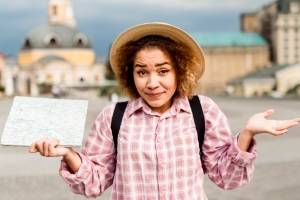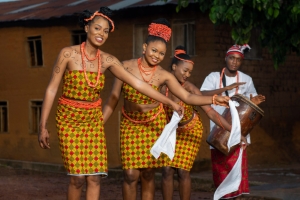Introduction
Botswana is a land of breathtaking landscapes, untamed wildlife, and unforgettable safari experiences. From the shimmering waters of the Okavango Delta to the vast, sunbaked plains of the Kalahari, every corner of this country offers something unique. But when is the best time to visit?
The answer depends on what you’re looking for—whether it’s thrilling game drives, spectacular birdwatching, cultural festivals, or simply the best weather for exploring. Let’s dive into Botswana’s seasons and help you decide the perfect time for your adventure.
Understanding Botswana’s Seasons
Unlike many destinations that follow a four-season pattern, Botswana experiences two main seasons: the dry season (May–October) and the wet season (November–April). Each comes with its own set of experiences, advantages, and challenges.
1. The Dry Season (May – October): Peak Safari Season
What to Expect:
- Clear, blue skies and little to no rain
- Cooler temperatures (especially in June–August)
- Sparse vegetation, making it easier to spot wildlife
- Animals congregate around water sources, offering excellent game-viewing opportunities
Best for:
✔️ Game Viewing – The thinning vegetation and drying waterholes force wildlife to cluster in predictable locations, making it easier to see elephants, lions, leopards, and other iconic animals.
✔️ Okavango Delta Floods (June – August) – While the rest of the country is dry, the Delta is in full flood, creating stunning waterways perfect for mokoro (dugout canoe) safaris.
✔️ Chobe River Cruises (April – November) – The Chobe National Park is home to one of the largest elephant populations in Africa, and boat safaris offer a unique way to see them up close.
✔️ Cooler, Comfortable Weather – Mornings and evenings can be cold (especially in June and July), but the days are pleasant.
Things to Consider:
- High Season Prices: Lodges and camps can be expensive, and bookings need to be made in advance.
- Cold Nights & Mornings: If traveling in June–August, bring warm clothing for early morning game drives.
2. The Wet Season (November – April): Green Season & Birdwatching Paradise
What to Expect:
- Lush, green landscapes with dramatic skies
- Afternoon thunderstorms (short but heavy downpours)
- Warmer temperatures (sometimes very hot and humid)
- Fewer tourists, leading to lower accommodation costs
Best for:
✔️ Birdwatching (November – March) – Migratory birds arrive, making it a paradise for bird lovers.
✔️ Kalahari’s Transformation (December – April) – The dry desert turns green, attracting grazing animals and predators in areas like the Central Kalahari Game Reserve and Nxai Pan National Park.
✔️ Baby Boom (November – March) – Many animals give birth during this season, offering a chance to see young antelope, lion cubs, and other newborns.
✔️ Lower Prices & Fewer Crowds – This is the best time for budget travelers, as lodges and safari tours offer significant discounts.
Things to Consider:
- Challenging Wildlife Viewing – With abundant water sources, animals scatter, making them harder to find.
- Some Roads Become Inaccessible – Certain remote safari areas, like the Kalahari and Moremi, may be difficult to access due to flooding.
- Mosquitoes & Malaria Risk – More rain means more mosquitoes, so taking malaria precautions is essential.
Best Time to Visit Based on Activities
- For a Classic Safari Experience: If your main goal is spotting Africa’s iconic wildlife, the best time to visit is between June and October. The dry season forces animals to gather around waterholes, making game viewing easier and more rewarding.
- For an Okavango Delta Mokoro Safari: The best time to explore the Okavango Delta’s waterways in a traditional mokoro (canoe) is June to August when the Delta is in full flood. This is when you’ll witness the stunning contrast of lush channels surrounded by an otherwise arid landscape.
- For a Chobe River Safari: A boat safari on the Chobe River is a must, especially between April and November, when massive herds of elephants, buffalo, and other wildlife gather along the riverbanks.
- For Birdwatching Enthusiasts: If you love birdwatching, plan your trip between November and March. This is when migratory birds arrive, filling Botswana’s skies and wetlands with vibrant colors and sounds.
- For Budget Travelers: If you’re looking to explore Botswana on a budget, consider traveling during the Green Season (November to April). Lodges offer discounts, and national parks are far less crowded, allowing for a more relaxed experience.
- For Experiencing the Kalahari Desert: The best time to visit the Kalahari Desert is December to April, when seasonal rains transform the landscape, attracting herds of antelope and their predators. This period also offers spectacular scenery, with dramatic thunderstorms painting the sky.
- For Cultural Festivals and Local Events: Many cultural festivals take place between April and October, so if you’re interested in experiencing Botswana’s rich traditions, this is an ideal window to visit.
Final Verdict: When Should You Go?
- For a Classic Safari Experience → June – October is unbeatable for spotting big game.
- For a Unique Okavango Delta Water Safari → Visit between June – August when the Delta is in full flood.
- For Budget-Friendly Travel & Lush Landscapes → Consider the Green Season (November – April) for fewer tourists and lower prices.
- For Bird Enthusiasts & Baby Animals → The Wet Season (November – March) is ideal.
Final Tip:
Botswana is a year-round destination, and no matter when you visit, you’ll find something spectacular. Your ideal travel time depends on your priorities—whether it’s abundant wildlife, stunning scenery, or a budget-friendly adventure. So, when will your Botswana adventure begin?








